Roadway safety is a crucial aspect of everyone’s daily routine. Across the country, people use roads and sidewalks to get to work, school, stores, and home. However, not every trip is without incident. According to the Bureau of Labor Statistics, motor vehicle crashes are the leading cause of work-related deaths in the United States and the 1st or 2nd leading cause of death in every major injury group. These deathly statistics are why NSC has decided to make Roadway Safety the topic for week 2 of National Safety Month.
Driver fatigue is a major workplace safety risk. The good news: a fatigue risk management system can help employers and workers reduce the risks of driver fatigue.
The NIOSH Center for Motor Vehicle Safety has outlined several strategies for employers to create an effective risk management system:
- Use a Fatigue Risk Management System (FRMS): Promote alertness among workers, identify fatigue-prone tasks, and lessen fatigue and its potential consequences.
- Set Policies: Establish policies for maximum numbers of overtime hours and consecutive shifts.
- Ensure Sufficient Staffing Levels: Factor in absences due to vacation days, sickness, and turnover.
- Provide Worker Training: Educate employees on sleep health and fatigue management.
- Allow for Rest Breaks: Permit rest breaks and napping during extended work shifts.
- Review In-Vehicle Monitoring Data: Use technologies to detect signs of possible fatigue episodes, such as lane departures.
Wisconsin Safety Council encourages drivers to share the road responsibly by following these safety tips and more from the CDC:
- Prepare Before You Go: Check the oil, put air in the tires, and repair open recalls to ensure your vehicle is safe for driving.
- Buckle Up: Use seat belts, and ensure appropriate car seats are installed correctly.
- Designate a Sober Driver: Arrange alternate transportation if needed. Remember, drugs (including opioids, cannabis, and some over-the-counter medicines) can impair driving.
- Slow Down: Adhere to speed limits, adjusting speed according to road conditions.
- Drive Distraction-Free: Avoid using cell phones while driving. #JustDrive
- Look Before You Lock: Always check your back seat for children or animals to prevent pediatric vehicular heatstroke.
By implementing these guidelines and tips, we can all contribute to safer roads and a safer community.




